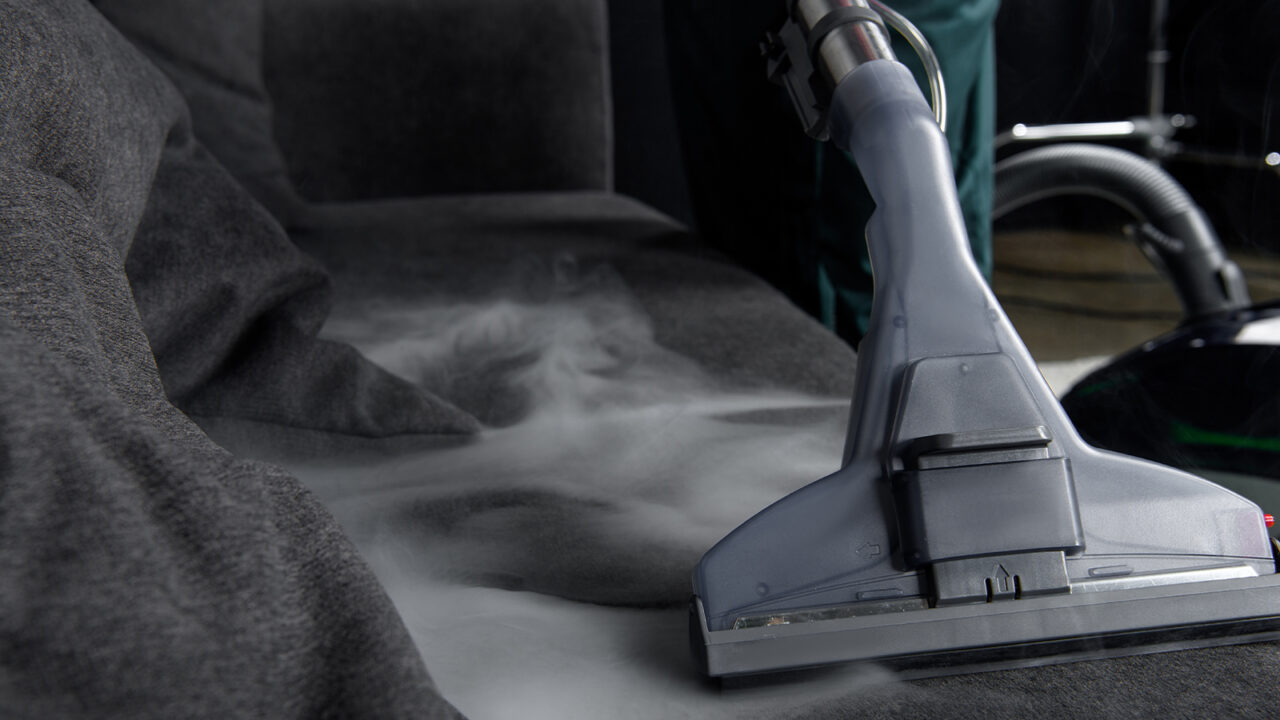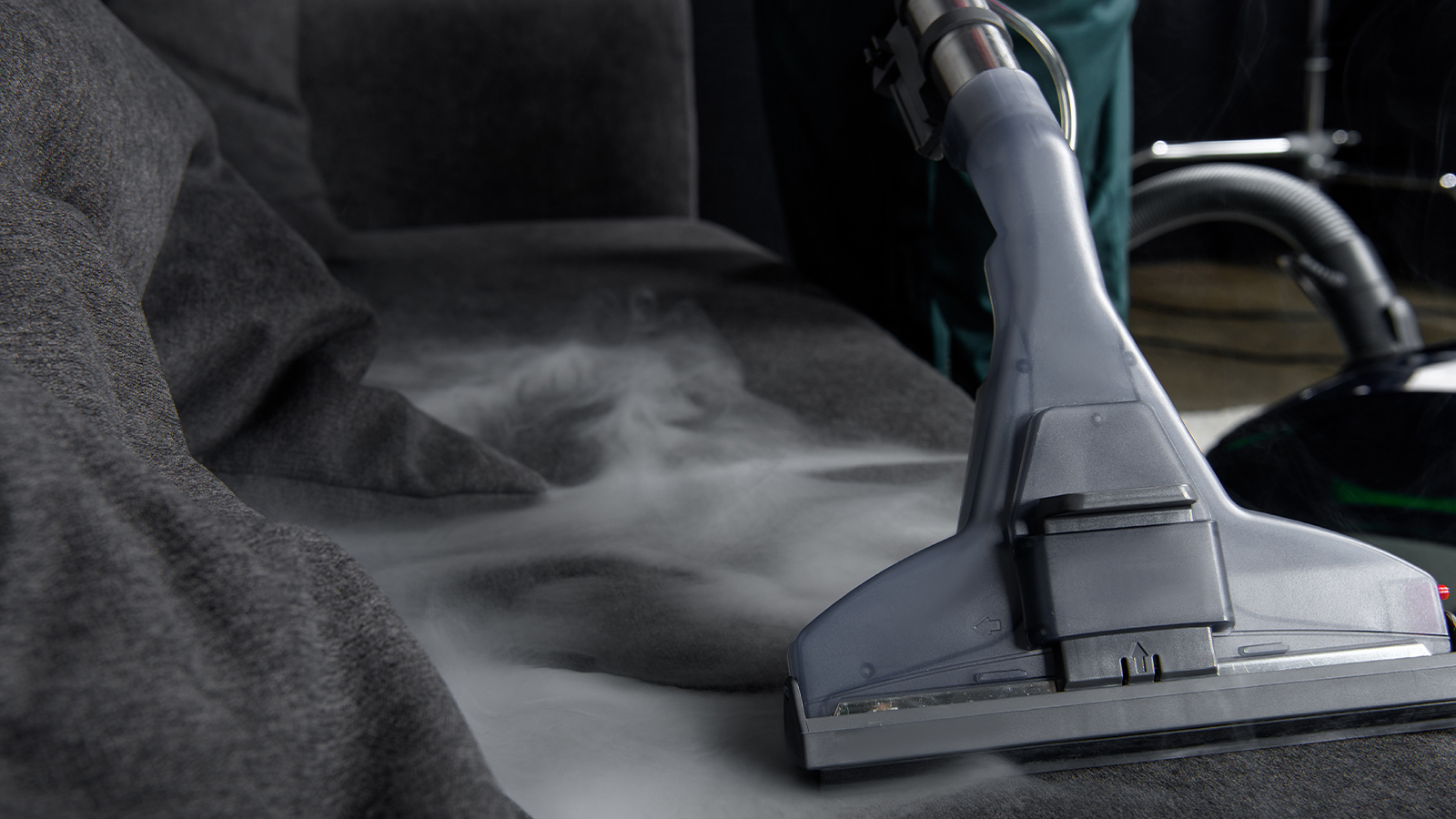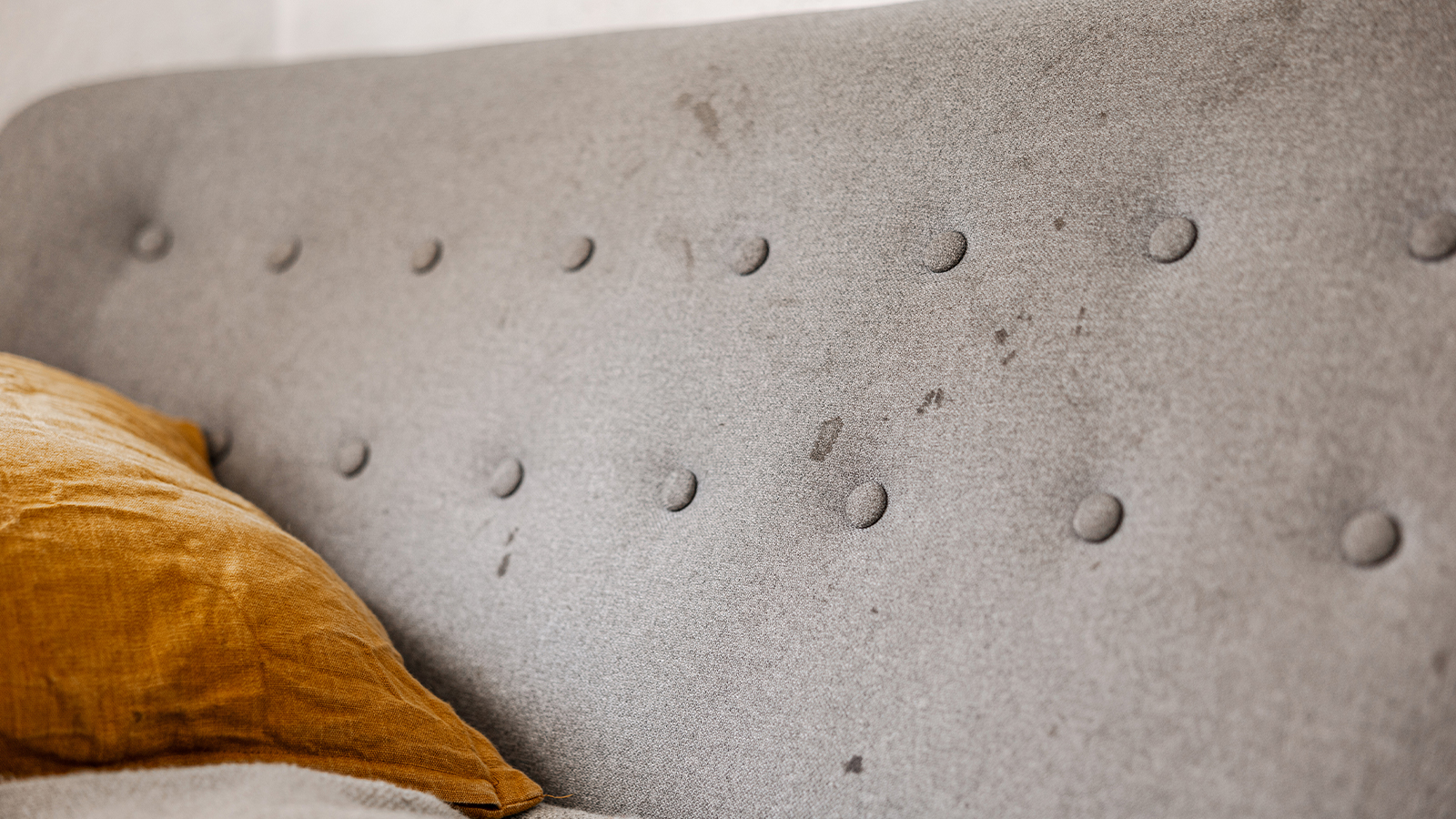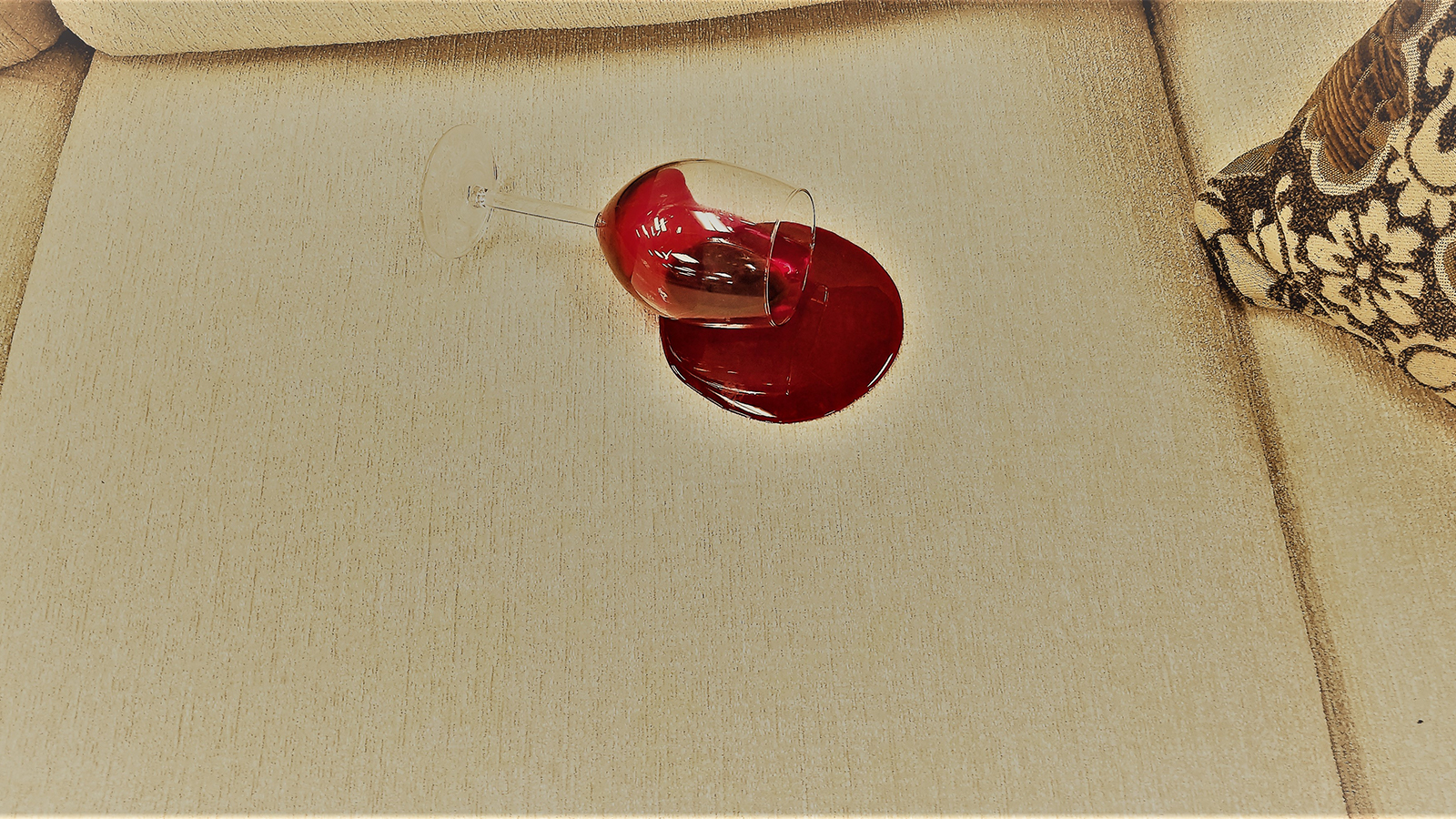Upholstery faces various stains, from spills to dirt accumulation. It’s vital to know the right techniques for different fabrics to keep furniture looking good. Whether it’s natural fibers like cotton and wool or synthetic ones like polyester, microfiber, and nylon, the right cleaning solutions are key.
This guide will cover the best ways to remove stains from upholstery, including DIY and professional methods. You’ll learn to identify fabric types, pick the best cleaning products, and tackle tough stains safely. By the end, you’ll have the skills to maintain your upholstered furniture’s appearance for years.
Key Takeaways
- Different upholstery fabrics require specific stain removal techniques to avoid damage
- Identifying the type of fabric and stain is crucial for selecting the appropriate cleaning solution
- DIY stain removal methods can be effective for many common upholstery stains
- Professional upholstery cleaning services are recommended for stubborn or extensive stains
- Regular maintenance and quick action can help prevent stains from setting in and extend the life of your upholstered furniture
Introduction
Dealing with upholstery stains can seem overwhelming, especially when faced with delicate fabrics and tough stains on your favorite sofa or chair. Yet, the right cleaning solutions and techniques can help you conquer common stains. This guide will take you through the steps of removing new and old stains, from identifying fabric types to using DIY methods and knowing when to call in the professionals like Steam Commander.
First, it’s essential to know the fabric type you’re working with. Different fabrics need specific cleaning methods to avoid damage and achieve the best results. Some recommended cleaning solutions include:
- Marine vinyl cleaners like 303 Marine Cleaner, Star Brite vinyl cleaner, and Vinyl Sauce by Bling Sauce
- OxiClean Total Care Carpet & Upholstery Cleaner for general upholstery stains
- Star Brite Ultimate Vinyl Cleaner, Spray 9, or a bleach-soaked towel (used cautiously) for tougher stains
Remember, not all products work on all fabrics. For example, Mr. Clean pads and 3M vinyl stain remover may not be effective on all types. Also, avoid using abrasive cleaners like magic erasers and soft scrub products, as they can harm the fabric over time. Limit your use or rubbing alcohol if possible.
When dealing with stains, various methods can be used based on the fabric and stain type. These include:
| Technique | Description | Suitable Fabrics |
| Presoaking | Soaking the stained area in a cleaning solution for 30 minutes to overnight | Most fabrics, especially heavily stained items |
| Sponging | Applying the cleaning solution with a sponge and dabbing the stain | Most fabrics, but may cause rings on acetate, triacetate, and rayon |
| Tamping | Tapping the stain with a brush to work the cleaning solution into the fibers | Durable, tightly woven fabrics; may damage delicate materials |
Exposing the cleaned area to sunlight can also help fade any remaining stains. Always test the cleaning solution on a hidden area first and follow the manufacturer’s instructions carefully.
“At Steam Commander, we understand that every upholstery fabric is unique and requires a tailored approach to stain removal. Our award-winning upholstery and carpet cleaning services in Houston ensure that your furniture remains fresh, clean, and long-lasting.”
By understanding your upholstery fabric, using the right cleaning solutions, and employing the correct techniques, you can successfully remove most common stains. However, if a stain is particularly stubborn or you’re unsure of the best method, seeking professional upholstery cleaning services is advisable to ensure the best results and to get your piece of furniture looking as good as new.
Preparation For Upholstery Stain Removal
Before tackling stain removal, preparation is key. With 70% of homes facing upholstery stains, the right tools and knowledge are crucial. Knowing your fabric type and using the correct cleaning agents can boost your stain removal success by up to 60%.
Assessing The Fabric Type
Identifying your fabric is the first step in upholstery care. Different materials need specific cleaning methods to avoid damage. Delicate fabrics like silk and wool can be challenging to clean, with 40% of people facing issues. Always refer to the manufacturer’s care label or seek professional advice if unsure.
Initial Steps Before Stain Treatment
Act fast when a spill happens to prevent permanent stains. Use a clean, white cloth or paper towel to blot the stain. This helps absorb liquid and stops the stain from spreading. Rubbing can push the stain deeper, so blot gently. Quick action can increase stain removal success by up to 60%.
Common Upholstery Cleaning Agents
Having the right cleaning solutions is essential for stain removal. Common agents include:
- Dishwashing liquid
- White vinegar
- Baking soda
- Hydrogen peroxide
Homemade solutions with these ingredients can remove stains in about 80% of cases. Always use the mildest solution and test it first on a hidden area.
| Stain Type | Cleaning Solution |
| Coffee | Soap and water |
| Juice | Vinegar and ammonia solution |
| Beer | Soap (fresh stains) or vinegar and water (older stains) |
| Red wine | Salt, then vacuum or beat out |
| Blood | Cold water, then dry |
| Jam or marmalade | Soap and vinegar solution |
| Chocolate | Soap and warm water |
| Tea or cocoa | Water, vinegar, and washing-up liquid |
| Gum | Freeze with ice, scrape off, then rub with methyl alcohol |
Proper preparation, fabric assessment, initial steps, and the right cleaning agents are key. They help tackle common stains effectively, keeping your furniture looking great.
Stain Removal Techniques by Fabric Type
Upholstery care and stain removal depend heavily on the fabric type. Each fabric needs a specific cleaning method to remove stains effectively. This section will cover techniques for natural, synthetic, and leather or faux leather fabrics.
Techniques for Natural Fabrics
Natural fabrics like cotton, linen, and wool are delicate. They require gentle stain removal methods. A simple mix of liquid dish soap and water often works well. Use a clean white cloth to apply the solution to the stain, starting from the outside.
After treating the stain, rinse with clean water and blot dry with a fresh cloth. This approach helps preserve the fabric’s integrity.
Techniques for Synthetic Fabrics
Synthetic fabrics, such as polyester and nylon, are more durable and stain-resistant. They can handle stronger cleaning solutions. A mix of equal parts white vinegar and water is effective for synthetic stains.
Apply the solution to the stain with a clean cloth, then gently blot and rinse with clean water. For tougher stains, a commercial upholstery cleaner for synthetic fabrics may be necessary.
Techniques for Leather and Faux Leather
Leather and faux leather require special care to maintain their appearance. Always use a leather cleaner specifically formulated for your leather type. Apply the cleaner to a soft, lint-free cloth and gently wipe the stained area.
Avoid using excessive water or harsh chemicals, as they can damage the leather’s finish. After cleaning, apply a leather conditioner to keep the material supple and prevent cracking.
| Fabric Type | Stain Removal Technique | Recommended Products |
| Natural Fabrics (Cotton, Linen, Wool) | Blot with liquid dish soap and water solution | Mild dish soap, warm water, clean white cloths |
| Synthetic Fabrics (Polyester, Nylon) | Apply white vinegar and water solution, blot and rinse | White vinegar, water, commercial upholstery cleaner for synthetic fabrics |
| Leather and Faux Leather | Use leather cleaner and soft cloth, avoid excessive water | Leather cleaner specific to leather type, leather conditioner, lint-free cloths |
Using these fabric-specific stain removal techniques can effectively tackle stains on your upholstery. Always test any cleaning solution on an inconspicuous area first. With the right approach and patience, your upholstery will remain clean and fresh for years.
Best Practices for Maintaining Clean Upholstery
Keeping your upholstered furniture clean is key to its longevity and appearance. Simple maintenance routines and avoiding common mistakes can keep your furniture looking great for years. This ensures it remains a valuable part of your home.
Routine Cleaning Tips to Prevent Stains
Preventing stains is crucial for clean upholstery. Adopt these cleaning habits to reduce dirt and stain risks:
- Vacuum your furniture monthly, focusing on crevices and hard-to-reach spots. For busy areas, vacuum weekly.
- Rotate and flip cushions to ensure even wear and prevent dirt buildup on used sections.
- Apply fabric protectors to create a barrier against spills and stains. Reapply as recommended by the manufacturer.
- Clean throw blankets and decorative pillows regularly, following their care labels to prevent mold and maintain appearance.
Avoiding Common Stain Removal Mistakes
Act quickly when a spill or stain happens, avoiding mistakes that can worsen the issue. Remember these tips:
- Never scrub or rub a stain, as it can spread and damage the fabric. Gently blot with a clean, white cloth to absorb spills.
- Avoid using too much water or cleaning solutions to prevent moisture damage and stain penetration. Use only what’s needed for the area.
- Don’t apply heat to a stain, as it can set it permanently. Let the area air dry naturally or use a fan to speed up drying.
- Always test a cleaning solution on a hidden area first to avoid discoloration or damage.
| Fabric Cleaning Code | Meaning | Recommended Cleaning Method |
| W | Water-based cleaning | Use water-based cleaners, upholstery shampoos, or mild detergents |
| S | Solvent cleaning | Use solvent-based cleaners, such as dry cleaning fluids or citrus-based solvents |
| S/W | Solvent or water-based cleaning | Use either solvent-based or water-based cleaners, depending on the type of stain |
| X | Vacuum only | Do not use any liquid cleaners; vacuum or brush the fabric gently |
By following these maintenance and stain prevention tips, your furniture will stay in top condition. Address stains promptly, choose the right cleaning method for your fabric, and maintain a regular cleaning schedule. This way, your upholstered furniture will remain a beautiful and functional part of your home.
When To Seek Professional Upholstery Cleaning Help
DIY methods can handle many stains well, but there are times when professional help is needed. If you face large, hard-to-remove stains or are unsure about the right cleaning method for your fabric, it’s time to call the experts.
Identifying Stains Too Stubborn To Remove
Red Wine Stains, coffee, or pet accidents can be tough to remove, especially if they’ve set in the fabric. Professional steam cleaners have the skills, experience, and specialized tools to deal with these stubborn stains effectively.
| Stain Type | DIY Difficulty | Professional Cleaning Recommended |
| Red Wine | High | Yes |
| Coffee | Medium | Yes, for set-in stains |
| Pet Accidents | High | Yes, for odor removal and sanitization |
| Ink | Very High | Yes |
The Benefits of Professional Upholstery Cleaning Services
Professional upholstery cleaning offers many benefits, including:
- Access to advanced cleaning equipment and products for effective stain removal
- Expertise in handling delicate fabrics without causing damage
- Removal of deeply embedded contaminants like dirt, dander, and oils for a healthier couch
- Improved indoor air quality by removing allergens like dust mites and pet dander
- Neutralization of lingering odors caused by food residue or pet messes
- Enhanced appearance and longevity of your upholstered furniture
Professional upholstery cleaning can increase the lifespan of furniture upholstery fabric and is recommended at least once a year to maintain furniture due to daily wear and tear.
How to Choose a Trustworthy Upholstery Cleaner
When choosing an upholstery cleaner, consider these factors:
- Look for a company that uses eco-friendly cleaning solutions to ensure the safety of your family, pets, and the environment.
- Choose a service provider that employs experienced technicians who are trained in various cleaning methods and fabric types.
- Research the company’s reputation by reading reviews and asking for references from past clients.
- Inquire about their cleaning processes, including pre-treatment, spot treatment, and post-cleaning care.
- Consider the company’s pricing, availability, and customer service to ensure a smooth and satisfactory experience.
By trusting your upholstery to a reputable professional cleaning service, you can rest assured that your furniture is in good hands. It will be restored to its original beauty and cleanliness.
Summary
Understanding fabric types and using the right cleaning techniques makes upholstery stain removal manageable. Quick action and the right DIY solutions, like Folex, Resolve, or OxyClean, can remove common stains. However, always test for colorfastness to avoid damage.
Regular maintenance, including vacuuming and protective treatments, reduces stain risk and extends upholstery life. For tough stains or delicate fabrics, professional cleaning services are recommended. They use specialized cleansers and know how to handle various fabrics.
Patience is crucial in upholstery stain removal, as fibers may take days to fully recover. By following these guidelines and using the right techniques for your fabric, you can keep your upholstery looking great. A proactive approach and knowing when to seek professional help ensure you can handle any stain.
FAQ
What are some common upholstery stains?
Common stains on upholstery include spills from food and drinks, pet accidents, ink, grease, and everyday dirt. These can be tough to remove. However, with the right cleaning methods and solutions, most stains can be effectively dealt with.
How do I identify my upholstery fabric type?
To find out your upholstery fabric type, look at the manufacturer’s tag or care label. This is usually found on the underside of the furniture. The label will tell you about the fabric and how to clean it. Common fabrics include natural materials like cotton, linen, wool, and silk. Synthetic materials like polyester, nylon, acrylic, and olefin are also common.
What should I do when a spill occurs on my upholstery?
If you spill something, act fast to soak up as much liquid as you can with a clean, white cloth or paper towel. Don’t rub the stain, as this can make it worse and spread it. Instead, blot from the outside in to keep the stain contained.
What are some common cleaning agents for upholstery?
Common cleaning agents for upholstery include liquid dish soap, white vinegar, baking soda, and hydrogen peroxide. Always choose the mildest solution to avoid damaging the fabric. Before applying it to the stain, test the cleaning solution on a hidden area.
How often should I clean my upholstery?
Keeping your upholstery clean is key to its longevity. Vacuum it weekly to remove dust and debris. Also, rotate and flip cushions to ensure even wear. Applying protective treatments can help prevent spills and stains.
When should I seek professional help for upholstery stain removal?
If you face large or stubborn stains, or if you’re unsure about cleaning your upholstery, it’s time to call a professional. Experts have the right tools and products for tough stains. They also know how to handle delicate fabrics safely.




